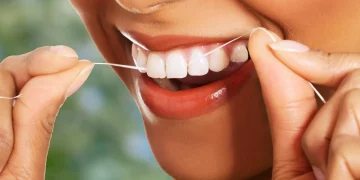Teeth whitening has become one of the most popular cosmetic dental treatments in recent years, thanks to its ability to deliver a brighter, whiter smile. Whether done in a dental office or using at-home products, teeth whitening promises to give a more youthful and vibrant appearance. However, many people wonder: how long will these results last, and is there any risk of damage to their teeth? In this article, we will dive deep into the effectiveness, longevity, and potential risks of teeth whitening, providing you with a comprehensive understanding of what to expect when you whiten your teeth.
1. What Is Teeth Whitening?
Teeth whitening refers to the process of lightening the color of the teeth through various methods, either in-office or at home. Whitening works by removing stains from the surface of the teeth or changing the color of the enamel itself. There are two common types of stains:
- Extrinsic Stains: These are stains that occur on the outer surface of the teeth and are typically caused by things like coffee, tea, smoking, or certain foods.
- Intrinsic Stains: These stains form inside the tooth and are often caused by aging, genetics, certain medications, or trauma to the tooth.
There are a variety of whitening options available, such as:
- In-office Whitening: A professional whitening treatment performed by a dentist. It involves the application of stronger bleaching agents and often uses light or laser to enhance the whitening process.
- At-home Whitening Kits: Over-the-counter products such as whitening toothpaste, strips, gels, and trays that contain milder bleaching agents. These can be purchased without a prescription.
- Natural Remedies: Methods like oil pulling or using baking soda are popular, though their effectiveness and safety may vary.
2. How Long Does Teeth Whitening Last?
One of the biggest questions people have about teeth whitening is how long the results will last. The longevity of your whiter smile depends on several factors:
Type of Whitening Treatment
- In-office Whitening: Professional teeth whitening typically provides the most dramatic and longest-lasting results. After an in-office treatment, most people can expect their teeth to stay whiter for up to a year or more, though this can vary depending on lifestyle factors.
- At-home Whitening Kits: Whitening products you use at home may not provide as long-lasting results as in-office treatments. At-home teeth whitening kits can last anywhere from a few months to six months, depending on the type of product used and how often it is applied.
Personal Habits and Lifestyle
- Diet: Foods and drinks like coffee, tea, red wine, and curries can stain your teeth and cause the whitening effect to fade more quickly. Avoiding these items can help prolong the results of your whitening treatment.
- Smoking: Tobacco use is one of the leading causes of teeth staining. Smoking or chewing tobacco will likely shorten the lifespan of your whitening results.
- Oral Hygiene: Proper oral hygiene habits play a crucial role in maintaining the whiteness of your teeth. Brushing twice a day, flossing daily, and using mouthwash can help keep stains at bay and extend the effects of teeth whitening.
Genetics and Age
- Age: As you age, your teeth naturally darken and the enamel wears down. While whitening treatments can reverse some of the discoloration, the natural aging process will continue to affect the color of your teeth.
- Genetics: Some people have naturally darker teeth due to their genetics. While whitening can still make a noticeable difference, the effects may not be as long-lasting in some individuals.
Maintenance Treatments
For longer-lasting results, many people opt for touch-up treatments. These can be done with over-the-counter products or professional treatments. Touch-up whitening every few months can help maintain a bright smile, especially if you want to preserve the results of a professional in-office treatment.

3. Does Teeth Whitening Cause Damage to Your Teeth?
While teeth whitening is generally safe when done correctly, some people worry about the potential risks and whether it could harm their teeth. Let’s explore the possible concerns:
Tooth Sensitivity
One of the most common side effects of teeth whitening is tooth sensitivity. Some people experience heightened sensitivity to hot, cold, or sweet foods after a whitening treatment. This sensitivity is typically temporary and should subside within a few hours to a few days.
- Cause: Whitening products contain peroxide-based bleaching agents that can temporarily open up the enamel pores. This allows the bleaching agents to penetrate the enamel and alter the color of the tooth. During this process, the tooth can become more sensitive.
- Prevention: If you experience sensitivity, using a toothpaste designed for sensitive teeth can help. Additionally, some whitening treatments come with desensitizing agents to reduce the risk of discomfort.
Enamel Damage
There are concerns that frequent whitening, especially with over-the-counter products, could cause damage to the tooth enamel. Enamel is the protective outer layer of your teeth, and if it becomes too thin, it can lead to permanent sensitivity and increased risk of cavities.
- Cause: Overuse of whitening products that contain strong bleach or abrasive substances can erode enamel over time. This is more of a concern with excessive use of whitening strips or pastes that are not designed for regular use.
- Prevention: It’s essential to follow the instructions on the whitening product and avoid overusing it. Professional treatments performed by a dentist are safer because they are carefully monitored and use controlled amounts of whitening agents. If you have concerns, consult with your dentist before using any whitening products.
Gum Irritation
Some people may experience gum irritation after whitening treatments, particularly if the whitening gel comes into contact with the gums. This irritation is usually mild and temporary, but in rare cases, it can cause more significant discomfort.
- Cause: The whitening agent can cause a chemical burn or irritation if it comes into prolonged contact with the gums.
- Prevention: Professional whitening treatments often use protective barriers to shield the gums from the bleaching agents. If you’re using at-home products, be careful to apply the product only to your teeth and not to the surrounding gums.
4. Is Teeth Whitening Safe for Everyone?
Teeth whitening is not suitable for everyone. The safety and effectiveness of whitening depend on several factors:
Pregnancy and Breastfeeding
There is limited research on the safety of teeth whitening during pregnancy or breastfeeding. As a precaution, it’s often recommended to avoid whitening treatments during these periods. While there is no direct evidence that whitening products harm a developing baby, it’s better to err on the side of caution.
Dental Conditions
- Tooth Decay: Teeth whitening should not be performed on teeth with untreated cavities. The bleaching agents can cause irritation and pain when they come into contact with exposed dentin.
- Gum Disease: If you have gum disease or an active infection in your mouth, it’s best to treat the underlying condition before undergoing whitening treatments. Whitening will not address gum health, and it could exacerbate existing issues.
Dental Work
Whitening treatments do not work on dental restorations, such as crowns, fillings, veneers, or bridges. These materials do not respond to the bleaching agents, meaning they will not become whiter while the rest of your teeth do.
5. How Can You Maintain White Teeth After Whitening?
If you’ve just completed a whitening treatment and want to maintain the results, here are some tips:
- Avoid Staining Foods and Drinks: Limit consumption of foods and drinks that can stain your teeth, such as coffee, tea, wine, and curry. When you do consume these items, rinse your mouth with water afterward.
- Quit Smoking: Smoking is one of the leading causes of tooth discoloration. Quitting can significantly extend the lifespan of your whitening results.
- Practice Good Oral Hygiene: Brushing your teeth twice a day, flossing daily, and using mouthwash will help prevent plaque buildup and staining.
- Use Whitening Toothpaste: Some whitening toothpastes help maintain the brightness of your smile by gently removing surface stains. Just be careful not to overuse abrasive whitening toothpastes, as they can wear down enamel over time.
Conclusion
Teeth whitening can be an effective way to achieve a brighter smile, but the longevity of the results depends on various factors, including your lifestyle, oral hygiene, and the type of treatment used. While whitening is generally safe when done properly, there can be some risks such as tooth sensitivity, gum irritation, or enamel damage if overused. The key to maintaining your bright smile is moderation and regular maintenance, including proper oral hygiene and occasional touch-ups. Always consult with your dentist before starting any whitening treatment to ensure it’s the right choice for your dental health.
In conclusion, teeth whitening can offer long-lasting results if done correctly and if proper aftercare is followed. By understanding the process, potential risks, and how to care for your teeth post-whitening, you can enjoy a bright smile without causing long-term damage.













































Discussion about this post